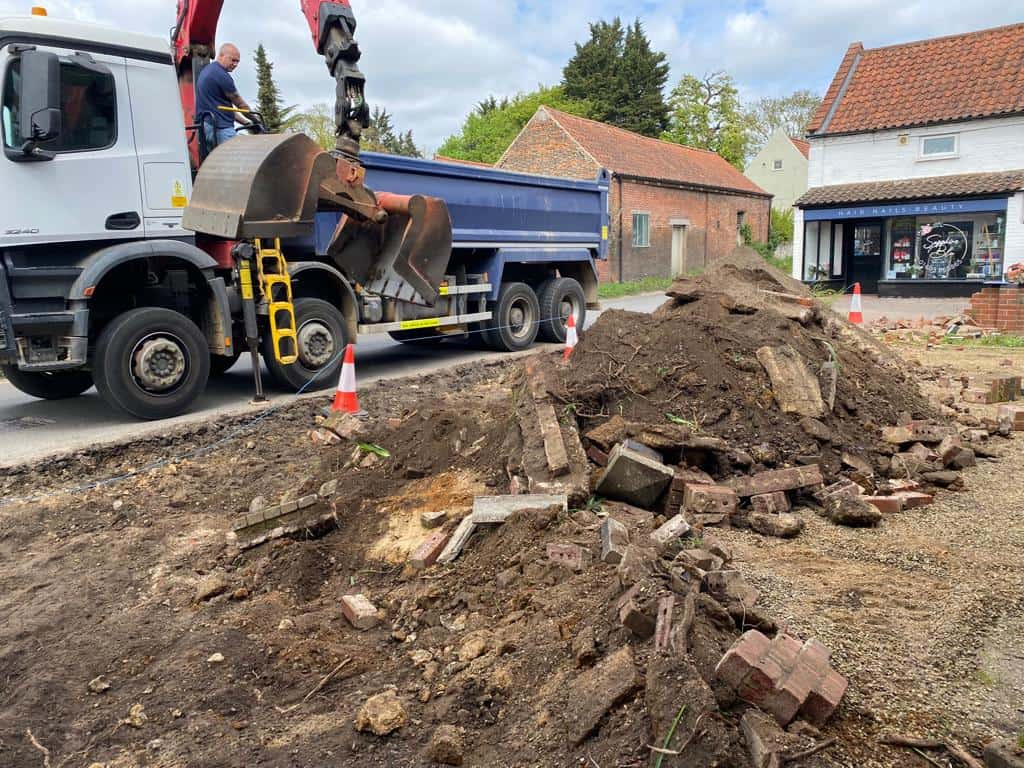Repairing a Tar & Chip Driveway: When to Resurface
Tar and chip driveways are a popular choice for homeowners who want a practical yet attractive surface that combines durability with rustic charm. Known for their resilience and textured finish, they perform well across a range of conditions — from heavy vehicle use to changing British weather. However, like any outdoor surface, a tar and chip driveway will eventually show signs of wear. Knowing when to repair and when to resurface can make all the difference in maintaining its performance and appearance.
At Gillingham Driveways, we help property owners across Gillingham and Kent assess the condition of their driveways and choose the right course of action for long-term results.
Understanding How Tar & Chip Driveways Age
Over time, natural wear and tear take their toll on any driveway surface. For tar and chip, the signs are usually subtle at first — loose stones, fading colour, or small cracks in the tar layer. These early signs might not seem serious but can indicate the start of more significant deterioration if left unaddressed.
Weather is the main factor that influences ageing. The repeated cycle of rain, frost, and sun can cause expansion and contraction in the bitumen, loosening the aggregate layer on top. Heavy vehicles or frequent traffic can also accelerate this process.
Regular inspections from professionals such as Gillingham Driveways can help identify these early warning signs before they develop into larger problems.
Common Signs Your Tar & Chip Driveway Needs Repair
Not every issue requires a full resurface. In many cases, timely repair can restore both function and appearance. Below are key indicators that your driveway may need professional attention:
1. Loose or Missing Stones
If you start noticing patches where the aggregate layer is thinning or stones are coming loose, it’s a clear sign the binder beneath has started to weaken. This not only affects appearance but can reduce traction and expose the underlying tar to further damage.
2. Small Cracks or Potholes
Minor cracks can quickly expand due to water ingress and temperature changes. Potholes, on the other hand, tend to develop in areas of frequent use such as turning points or vehicle entry spots. Early intervention prevents these from spreading.
3. Fading or Discolouration
Exposure to UV rays and rainfall can cause the surface to lose its colour over time. While this doesn’t always affect performance, it can make your driveway look aged. Resurfacing can refresh its appearance, restoring that distinctive natural stone finish.
4. Uneven Surface or Drainage Issues
If parts of your driveway have started to dip or collect standing water, it could mean the base layer has shifted or compacted unevenly. Left unchecked, water pooling can lead to more significant structural problems beneath the surface.
5. Reduced Grip or Roughness
The textured finish of tar and chip driveways provides excellent traction, especially in wet conditions. If the surface feels smoother or more slippery than before, resurfacing may be necessary to restore its original grip.
When a Simple Repair Is Enough
For localised issues such as small cracks, loose aggregate, or isolated wear, targeted repair is usually the most practical solution. The process may include:
- Cleaning the affected area to remove debris and dirt.
- Reapplying a small layer of hot bitumen to the damaged spot.
- Adding fresh stone chips and compacting them for a uniform finish.
This restores the surface without needing to resurface the entire driveway. Gillingham Driveways provides expert patching and maintenance work designed to blend seamlessly with the surrounding area.
When to Consider Resurfacing
Resurfacing becomes necessary when damage affects a large portion of the driveway or when repairs would no longer deliver long-term stability. A fresh tar and chip layer is often the best option if:
- More than 30–40% of the surface has loose or missing stones.
- Cracks and potholes are widespread.
- The base layer has weakened or developed uneven areas.
- You want to update the colour or aggregate type for improved appearance.
Resurfacing involves cleaning the existing base, applying a new coat of hot bitumen, and spreading a fresh layer of decorative aggregate. Once compacted, the result is a rejuvenated surface that looks new and performs reliably for years.
At Gillingham Driveways, we ensure resurfacing is carried out to the highest standards, using premium materials and precise application techniques that enhance durability and visual appeal.
Benefits of Timely Driveway Maintenance
Proactive maintenance not only saves time and cost in the long run but also protects your property’s kerb appeal. Keeping your tar and chip driveway in good condition offers several practical benefits:
- Extended lifespan: Regular upkeep can add years of use to your driveway.
- Improved appearance: A clean, uniform surface enhances the overall look of your home.
- Better safety: Repairing uneven or damaged areas helps prevent slips and vehicle damage.
- Reduced water damage: Resurfacing restores the driveway’s protective layer, preventing water penetration.
Routine care, combined with professional assessments from Gillingham Driveways, ensures your driveway remains an asset rather than a liability.
How Long Does a Tar & Chip Driveway Last?
With proper installation and maintenance, a tar and chip driveway can last well over a decade. The key to achieving this longevity lies in regular inspections and prompt repairs. Minor damage left untreated can allow water to penetrate beneath the surface, leading to faster deterioration.
At Gillingham Driveways, we recommend periodic checks — especially after winter — to assess for cracks, wear, or drainage issues that could compromise the structure. Early maintenance keeps the driveway looking sharp and functioning properly year-round.
The Importance of Professional Expertise
While it may be tempting to attempt small repairs yourself, tar and chip driveways require specialist equipment and materials to ensure long-term adhesion and an even finish. Professional installers, such as the team at Gillingham Driveways, bring years of experience in surface preparation, material selection, and compaction techniques.
We assess each project individually, considering the underlying base condition and the type of aggregate used. This attention to detail ensures your repaired or resurfaced driveway looks natural, performs well, and stands the test of time.
Why Choose Gillingham Driveways
Gillingham Driveways has built a reputation across Gillingham and Kent for providing reliable, high-quality driveway solutions. Whether your existing tar and chip surface needs a simple repair or a complete resurface, our skilled team can restore it efficiently and professionally.
We combine expert workmanship with premium materials to deliver results that not only improve functionality but also enhance your property’s appearance. Our experience with both residential and commercial surfacing ensures we can tailor every project to your needs.
Conclusion
Tar and chip driveways offer exceptional durability and timeless appeal, but like any surface, they require attention over time. Recognising when to repair and when to resurface is key to keeping your driveway in prime condition.
At Gillingham Driveways, we specialise in maintaining and restoring tar and chip surfaces across Gillingham and Kent, ensuring they remain strong, attractive, and long-lasting. Whether it’s a minor patch or a full resurfacing project, our professional team provides dependable solutions designed to protect and enhance your home’s exterior for years to come.
Call us on: 01634 564 190
Click here to find out more about Gillingham Driveways
Click here to complete our contact form and see how we can help with your driveway needs.

